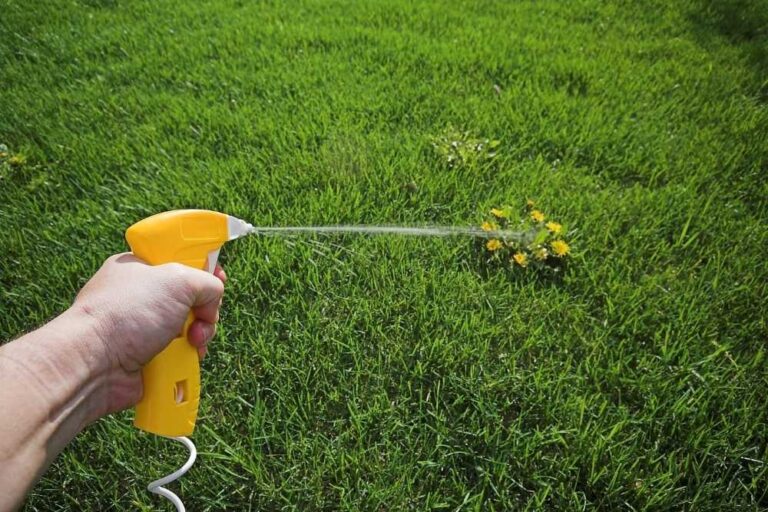10 Clear Signs How to Tell If Your Lawn Needs Lime
Maintaining a thriving lawn involves more than regular watering and mowing; Understanding when your lawn needs lime is pivotal for its overall health. The soil’s pH is often overlooked yet undeniably pivotal in lawn upkeep. The acidic or alkaline characteristics of your soil play a substantial role in the vitality of your grass.
As a soil enhancer, lime aids in balancing pH levels and facilitating the ideal assimilation of nutrients for your lawn. But how to tell if your lawn needs lime can be challenging. Luckily, some subtle indicators serve as nature’s signals, suggesting an imbalance in your soil’s pH levels. From yellowing grass to moss invasion, each sign is a clue to the potential benefits of lime application. Here are some of the key signs that your lawn needs lime:
Understanding Soil pH
Grasping the nuances of soil pH becomes imperative prior to exploring the nuanced indicators that suggest your lawn could reap advantages from lime. The soil’s acidity or alkalinity is quantified by the pH, measured on a scale that stretches from 0 to 14, where a middle ground of 7 denotes neutrality.
Ideal circumstances for the majority of grass varieties exist in soils slightly leaning towards acidity or a neutral stance, upholding a pH spectrum ranging from 6 to 7.5. Any deviation from this delicate balance has the potential to impact nutrient accessibility, microbial activity, and overall plant health.
10 Signs Your Lawn Needs Lime for Optimal Health
1. Yellowing Grass
One of the initial indications that your lawn might require lime becomes apparent when you observe yellowing grass. In the event that you detect patches or entire sections of your lawn transforming into a yellow hue despite adhering to appropriate watering and exposure to sunlight, this could serve as a potential signal of soil acidity. The acidic nature of the soil obstructs the accessibility of crucial nutrients to your grass, resulting in suboptimal growth and a somewhat uninspiring visual presentation.
Lime operates to counteract soil acidity, establishing a more conducive setting for nutrient absorption. As the pH level becomes balanced, the yellowing starts giving way to a healthier and more vibrant green. Regular soil testing is advisable to establish your lawn’s pH and the need for lime application.
2. Weed Growth and Moss Presence
Undesirable plants like weeds and moss often flourish in soil environments with heightened acidity. If you notice your lawn transforming into a battleground for these uninvited invaders, it might be an opportunity to focus on rectifying the fundamental concern of soil pH. The acidic soil setting poses challenges for the growth of typical grass varieties, providing a favorable chance for the takeover of opportunistic weeds and moss.
Administering lime to your lawn fosters an unwelcoming atmosphere for these undesirable intruders. With the gradual equilibrium of soil pH, your grass gains superior capabilities in surpassing weeds, and moss encounters heightened difficulty in securing a stable foothold. By tackling the foundational issues triggering weed and moss proliferation, you are actively engaging in a pre-emptive measure to sustain a robust and well-fortified lawn.
3. Slow or Stunted Growth
Another way on how to tell If your lawn needs lime is if it appears to be experiencing a leisurely rate of growth or exhibiting indications of restrained development, it might distinctly point to the presence of soil acidity. Soil with elevated acidity levels hampers the accessibility of vital nutrients, impeding the grass’s capacity to foster a sturdy root system and attain its maximum capability. Consequently, this may lead to the manifestation of a lawn characterized by sporadic and uneven coverage, lacking the luxuriance you aspire for.
Lime serves as a valuable soil enhancer, addressing not only soil acidity but also facilitating the absorption of essential nutrients. As the pH equilibrium is restored, your grass gains improved access to vital elements such as nitrogen, phosphorus, and potassium. This heightened availability of nutrients fosters robust growth, resulting in a denser, more verdant lawn with increased resilience against environmental challenges.
4. Compacted Soil
Compacted soil is another issue that lime can address. Over an extended period, soil compaction may transpire as a consequence of elements such as substantial foot traffic, mechanical activity, or the inherent settling process. Compacted soil impedes the movement of water, air, and nutrients, disturbing the holistic welfare of your lawn. How to tell if your lawn needs lime is if you happen to observe specific regions of your lawn showing indications of water gathering or insufficient infiltration, there is a likelihood that compacted soil serves as the fundamental concern.
Lime plays a crucial role in dismantling compacted soil by stimulating the engagement of soil microorganisms. By augmenting soil structure, lime facilitates a more effortless infiltration of water and nutrients, allowing them to seamlessly reach the grassroots. Consequently, this results in enhanced drainage, improved aeration, and an overall enhancement of soil health. The outcome is a more conducive environment for the luxurious growth of your grass.
5. Frequent Fertilizer Ineffectiveness
Should you discover that you’re consistently applying fertilizers but your lawn exhibits a lackluster response, it could hint at a potential issue with soil acidity. The effectiveness of fertilizers is impeded by acidic soil, causing a reduction in nutrient accessibility for the grass.
Lime assumes a pivotal role in optimizing nutrient availability by counteracting pH levels, facilitating enhanced absorption and utilization of applied fertilizers by the grass. Taking steps to rectify soil acidity through lime application allows you to amplify the effectiveness of your fertilization endeavors, resulting in a more enriched and lively lawn.
6. Excessive Moss Growth in Shaded Areas
Areas with less sunlight in your lawn are especially prone to the flourishing of moss, a tendency that worsens under conditions of increased soil acidity. If you observe a surplus of moss in shaded regions, it suggests that the soil might lean towards excessive acidity, hindering the well-being of your grass.
Moss tends to prosper in places where grass faces challenges, and rectifying the fundamental soil pH problem becomes imperative for re-establishing equilibrium. The application of lime in shaded sections serves to cultivate a more advantageous setting for grass, curbing the prevalence of moss and fostering a consistently luxurious lawn appearance.
7. Highly Variable pH Levels Across the Lawn
Conducting an in-depth soil examination throughout your lawn might unveil noteworthy fluctuations in pH levels from one region to another. Lawns encountering irregular pH levels may experience disparities in grass growth and color. The strategic application of lime can be employed to rectify these deviations, fostering a more standardized pH level across the entirety of the lawn.
Through the encouragement of a harmonious and steadfast pH, lime guarantees the equitable distribution of essential nutrients to every sector of your lawn, cultivating a unified and aesthetically pleasing verdant landscape.
8. Increased Susceptibility to Lawn Diseases
The acidity of the soil has the potential to weaken the inherent defenses of the grass, making it more susceptible to various lawn diseases. If you come across persistent challenges such as discolored patches, fungal infections, or other diseases, even with meticulous watering and maintenance, it may indicate an underlying problem related to soil acidity.
Applying lime strategically can serve as a protective measure, strengthening your lawn against diseases by creating an environment that supports robust grass growth. By reinstating the balance of pH, lime plays a role in enhancing the overall resilience of your lawn, diminishing its vulnerability to diseases, and contributing to a landscape that is both robust and visually appealing.
9. Water Runoff Issues
Monitoring increased water runoff, particularly in intense rainfall, could suggest a concern with soil composition and pH levels. The presence of acidity within the soil tends to induce compression, reducing its efficiency in absorbing water. This increases the likelihood of water cascading off the surface instead of infiltrating the soil. In turn, this leads to erosion and the potential depletion of crucial nutrients.
The application of lime serves to rectify issues related to soil compaction, enhancing the penetration of water and diminishing runoff. By augmenting the soil’s capability to retain water, lime plays a role in optimizing the distribution of moisture across the lawn, fostering robust grass development, and lessening the vulnerability to erosion.
10. Declining Performance of Acid-Sensitive Plants
Should your lawn feature plants with sensitivity to acidity, like specific flowers, shrubs, or veggies, their well-being may signal soil acidity levels. While plants fond of acidic conditions thrive in lower pH, grass may encounter difficulties. If you observe a waning vitality in acid-sensitive plants on your lawn, it implies the soil might be overly acidic for optimal grass development.
The application of lime aids in achieving equilibrium in soil pH, establishing an environment conducive to the coexistence of grass and acid-sensitive plants. This comprehensive strategy guarantees the sustained health and aesthetic appeal of your entire lawn.
Conclusion
Understanding how to tell if your lawn needs lime is a substantial stride towards promoting a healthier and more resilient grass. Achieving a lawn that exudes vitality requires meticulous consideration of multiple elements, with soil pH standing out as a pivotal factor that warrants careful attention. Should any of the aforementioned indicators catch your attention, it might be an opportunity to apply lawn. Consistent soil assessments coupled with anticipatory lime interventions serve as a proactive measure to guarantee that your grass encounters the ideal circumstances essential for flourishing.






